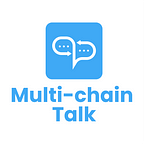Cross-Chain Bridge Analysis
As blockchain continues to develop, the market has witnessed the emergence of many chains, with Ethereum as the mainstay and many other public chains as pillars. The coexistence of chains, though with independent DeFi ecosystems, will be there to stay. As the number of public chains and Layer 2 projects increases and their respective ecosystems gradually improve, the demand for cross-chain transfer is expected to grow rapidly. That said, multichain interoperability has become a rigid demand that cannot be avoided.
In this context, the cross-chain bridge has become trendy stuff on the DeFi bandwagon, which has attracted lots of attention from the market. A cross-chain bridge is a chain-to-chain bridge tool that allows the transfer of tokens, assets, NFT, messages, or data from one chain to another. Two chains may have different protocols, rules, and governance models, but bridges provide a secure way of interoperability and compatibility for communication between the two sides.
According to Dune Analytics, as of February 14, 2022, the total value locked (TVL) of the 18 major cross-chain bridges listed by @eliasimos had reached approximately $23.87 billion.
Multi-chain is what’s happening now and will continue to be the inevitable future, while the cross-chain is the infrastructure to boost the growth of the multi-chain ecosystem. For that reason, this column will guide readers to have a clear understanding of mainstream and emerging cross-chain bridges through a series of project reports and analyses.
In Session 1, we will go through seven third-party cross-chain bridge projects by introductory reports, that is, cBridge, Hop Protocol, RenBridge, Synapse Protocol, THORChain, Connext and of course Multichain.
Session 2 familiarizes us with official cross-chain bridges.
